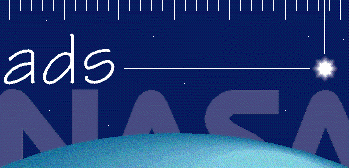
|
|
|
SAO/NASA ADS -> Help -> Topic Search (beta) |
|
| SAO/NASA ADS Help Pages |
 Prev |
Next Prev |
Next
|
2.3 - The Experimental Topic Search Interface The ADS Topic Search is an experimental interface allowing users more control in defining what it is that they are seeking. The search interface provides six different modes for searching the literature. Three of them (named "Keyword Searches") are based on the traditional approach of searching for the input keywords in the ADS database and then ranking the results based on one or more criteria specified by the user. The remaining three searches (named "Subject Area Searches") make use of the so-called second order relational operators to broaden a keyword-based search through collaborative filtering techniques. 2.3.1 - Keyword Searches Keyword Searches offered in our Topic Search interface simplify the task of selecting the different parameters otherwise required to obtain lists of papers ranked in a particular way. The functionality that they provide has long been available through the traditional ADS abstract search query form and the ADS basic search interfaces, but this interface tailors them in order to simplify their use. The options offered for Keyword Searches are: The logic employed to implement Subject Area searches is predicated on the assumption that we can make use of relationships between documents to characterize their relevance and usefulness with respect to a topic. Suppose you are interested in exploring a topic X and want to know what the most popular papers on the subject are. A keyword search can be used to first generate a list of recent papers on topic X. The (anonymous) users who have read papers on topic X will be, in the aggregate, people who are interested in topic X, and the papers they have read with the highest frequency will be the currently most popular papers on the subject. Using the original list of papers generated by a keyword search and the aggregate statistics about readership of these papers we can therefore create a secondary list of documents which can be interpreted as the most popular on a particular subject. Note that this is not just a re-ranking of the original list selected by a keyword match, but rather a selection of records related to the original list based on a set of shared attributes. As such, it is possible that a record returned by this secondary selection will not necessarily contain the keywords specified in the search. This has the effect of broadening the list of papers that would otherwise be returned by the original query, and can thus generate surprising results. The Subject Area searches currently implemented are: |
|
 Top
| Next Top
| Next
|
|